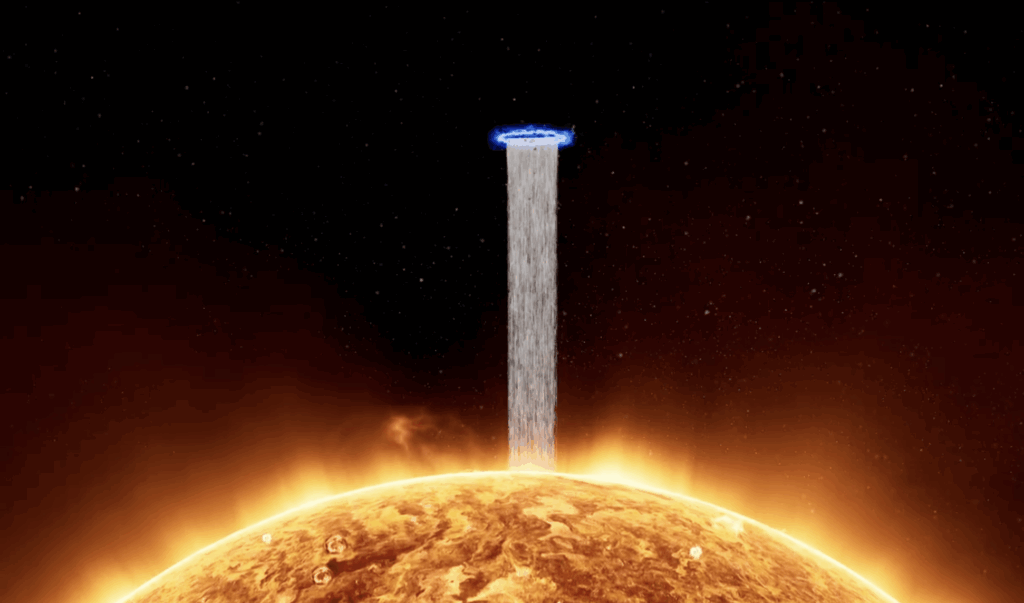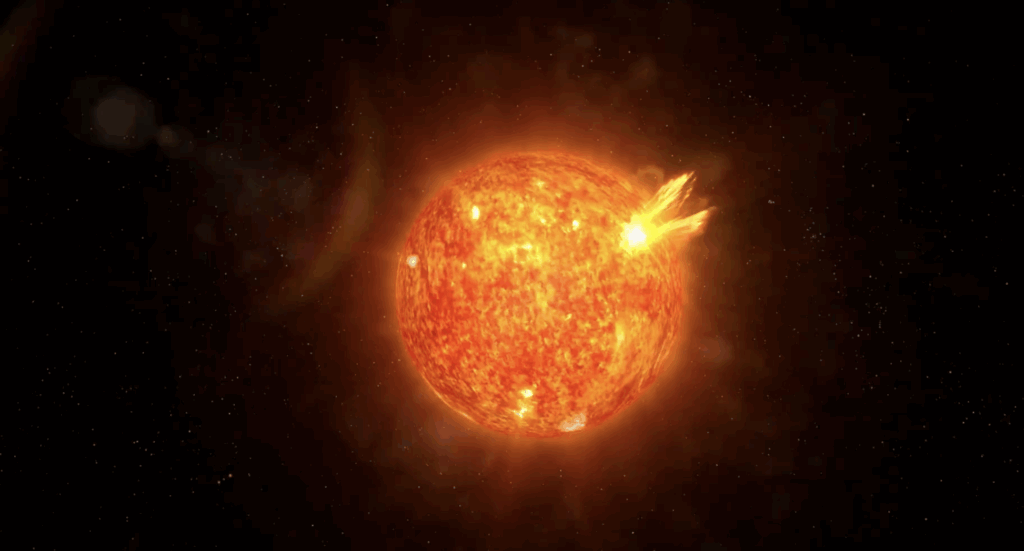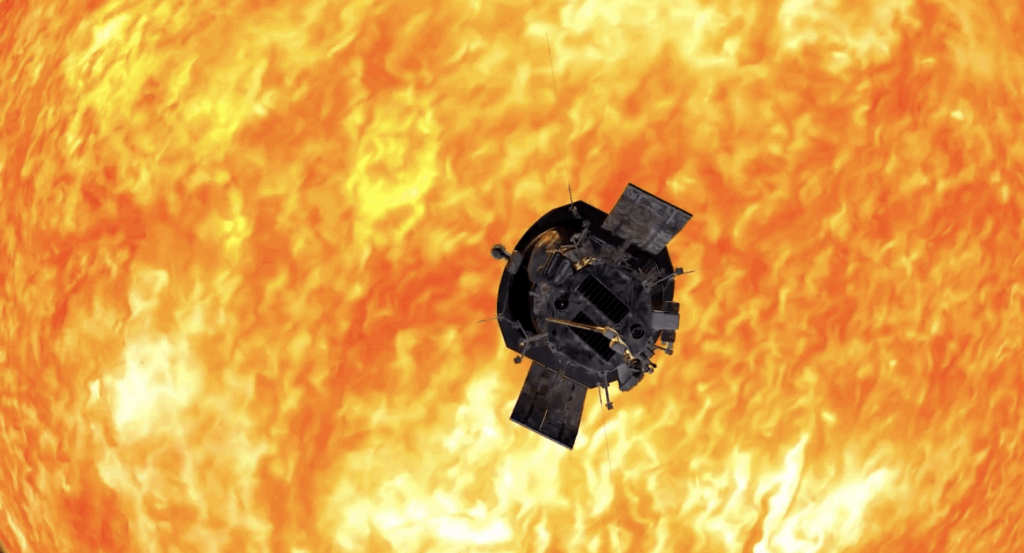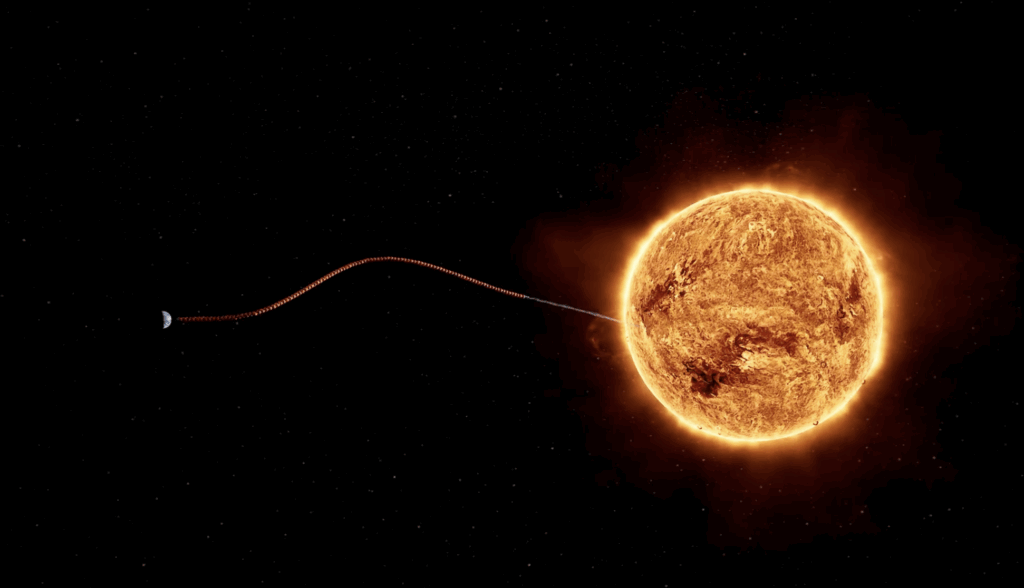Things are getting hotter and hotter here on Earth, and global warming has everyone panicking. But let us try a wild idea: what if we took every drop of Earth’s water and poured it on the Sun? Could it cool things down? And more importantly, is it even possible?

The thought sounds like science fiction, but it is an interesting way to think about the scale of our planet compared to the stars. Let us explore the cosmic scale of this challenge in eight eye opening points and see why this idea is more impossible than it seems.
1. The Sun Is Colossally Massive
The Sun is not just a giant ball of fire, it is the heavyweight of our Solar System. It is 1.3 million times the size of Earth, primarily made of hydrogen seventy percent and helium twenty eight percent, with the remaining two percent composed of elements like carbon, nitrogen, and oxygen.

Its surface temperature is around 5,600 degrees Celsius or 10,000 Fahrenheit, and every second, it releases energy equivalent to 15 billion atomic bombs. That is the fire we are supposedly trying to douse. The Sun’s immense gravity also keeps all the planets in orbit and shapes the entire solar system. Its scale is so vast that even comparing it to Earth feels almost meaningless.
2. Distance Makes the Mission Nearly Impossible
The Sun is about 150 million kilometers or 93 million miles away, roughly 400 times farther than the Moon. For comparison, Earth’s circumference is only 40,000 kilometers. Reaching the Sun is not just a long road trip, it is a logistical nightmare that requires far more energy than sending spacecraft to Mars.

Traveling this distance also exposes any mission to intense radiation and the solar wind, which could easily destroy anything in its path. Even our fastest spacecraft would take months or years to reach a fraction of the distance to the Sun safely.
3. Global Warming Isn’t the Sun’s Fault
Although the Sun is slowly getting hotter, it is only by one degree every 100 million years. The real culprit for our overheating planet is human activity and carbon emissions. Turning the Sun’s “thermostat” down with water would address the wrong problem entirely.
In fact, most of our climate issues are caused by greenhouse gases trapping heat in our atmosphere rather than changes in the Sun’s output. Understanding this distinction is crucial because even perfect cosmic engineering could not fix human caused warming.
4. The Scale of Earth’s Water Is Enormous
Earth’s surface is 71 percent water, totaling roughly 1.3 billion cubic kilometers or 332 million cubic miles. That is 554 trillion Olympic sized swimming pools. Even a small fraction of this volume is almost unimaginable to transport, let alone the entire planet’s supply.

To put it in perspective, if we tried to move just one percent of Earth’s water, it would still outweigh the combined weight of all human made structures by orders of magnitude. This highlights just how tiny Earth is compared to the scale of the Sun.
5. Launching Water to the Sun Is Mind Bogglingly Complicated
Even sending a single glass of water to the Sun is a monumental task. The Parker Solar Probe, the closest spacecraft ever sent, only reached 6.2 million kilometers from the Sun. Launching anything closer is extraordinarily difficult because objects leaving Earth must account for our planet’s high orbital speed of 107,000 kilometers per hour or 67,000 miles per hour.

This requires precise maneuvers and massive energy expenditure. Any deviation from the correct trajectory would send the water careening into space, lost forever. The engineering challenges alone make this project almost laughably impossible.
6. Scaling Up Makes It Totally Unrealistic
If we tried to pour something bigger like Lake Superior onto the Sun, we would need billions of tanker trucks and Starships to transport the water. Even with hundreds of powerful pumps working nonstop, moving all the water could take decades.

Building this infrastructure would cost trillions, destroy ecosystems, and likely spark international conflicts. It is not just a problem of logistics but also a problem of politics and ethics. Our resources would be far better spent addressing climate change here on Earth rather than attempting an impossible cosmic stunt.
7. Heat Would Vaporize Everything
Even if we somehow got the water to the Sun, the extreme heat would vaporize it instantly. Temperatures near the Sun reach 500,000 degrees Celsius or 900,000 Fahrenheit, far beyond what any spacecraft or pump could survive. The water would not cool the Sun it would turn to steam and split into hydrogen and oxygen, adding fuel to the star instead of reducing its fire.
This vaporization would happen almost instantly, leaving no chance to affect the Sun’s temperature. Any attempt would be like trying to fill a raging furnace with a teaspoon of water.
8. Water Would Actually Make the Sun Burn Brighter
Here is the cosmic twist: the Sun’s “fire” is not chemical combustion like a campfire, it is nuclear fusion. When water hits the Sun, it breaks into hydrogen and oxygen. The extra hydrogen could feed the Sun’s fusion reactions, making it burn slightly brighter.

Instead of cooling our star, we would essentially be adding fuel to an already enormous furnace. The very thing we hoped would help would make the situation worse. This shows that even well meaning ideas can have unintended consequences when dealing with the universe on such a massive scale.



























